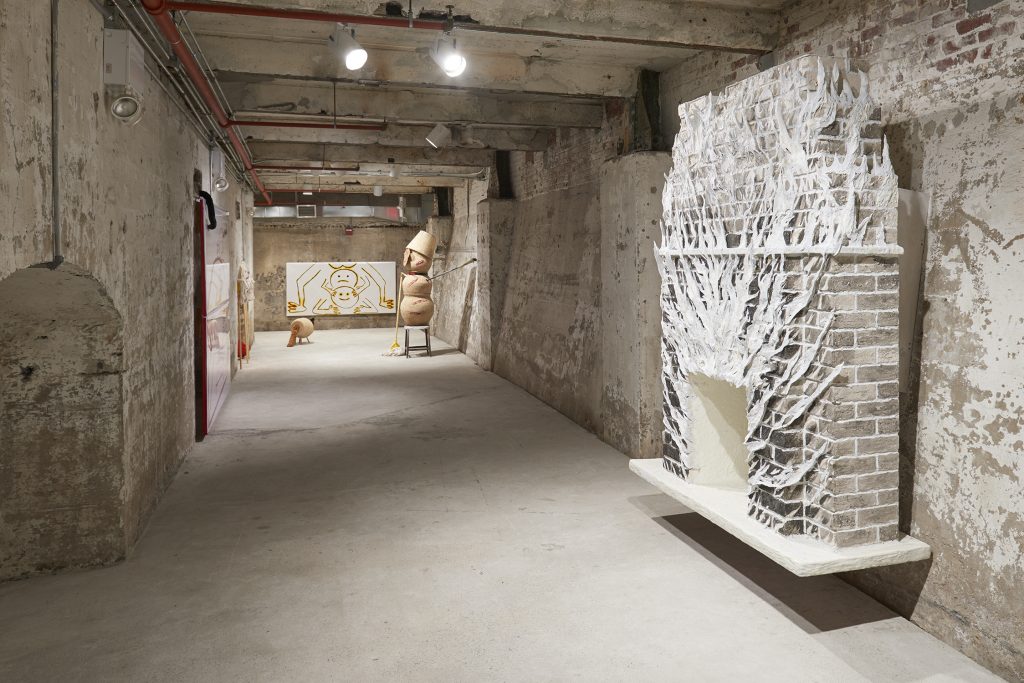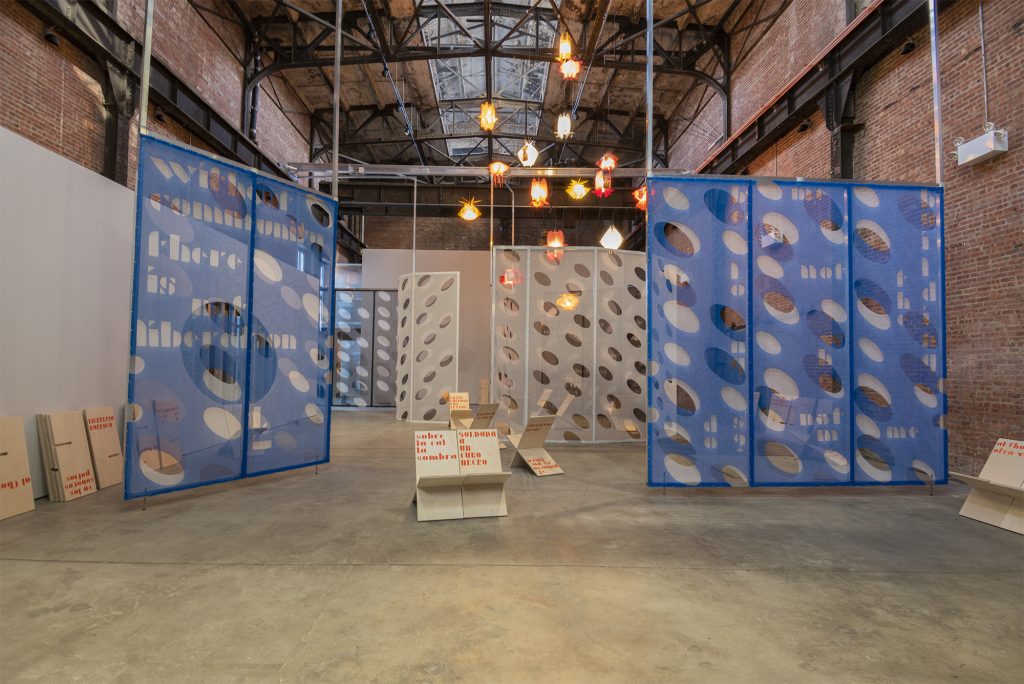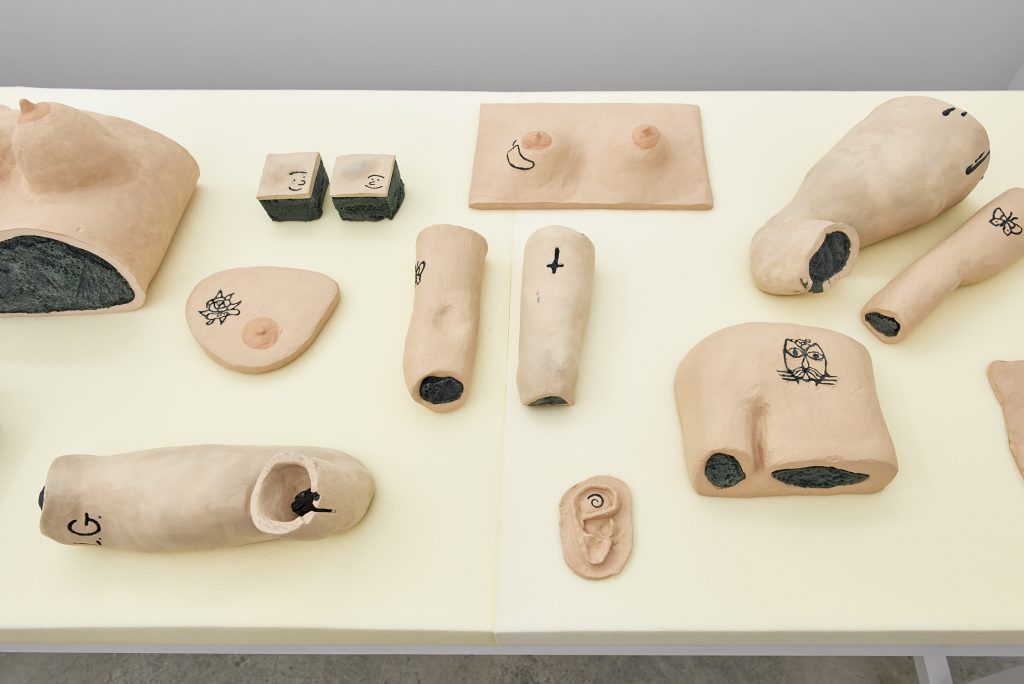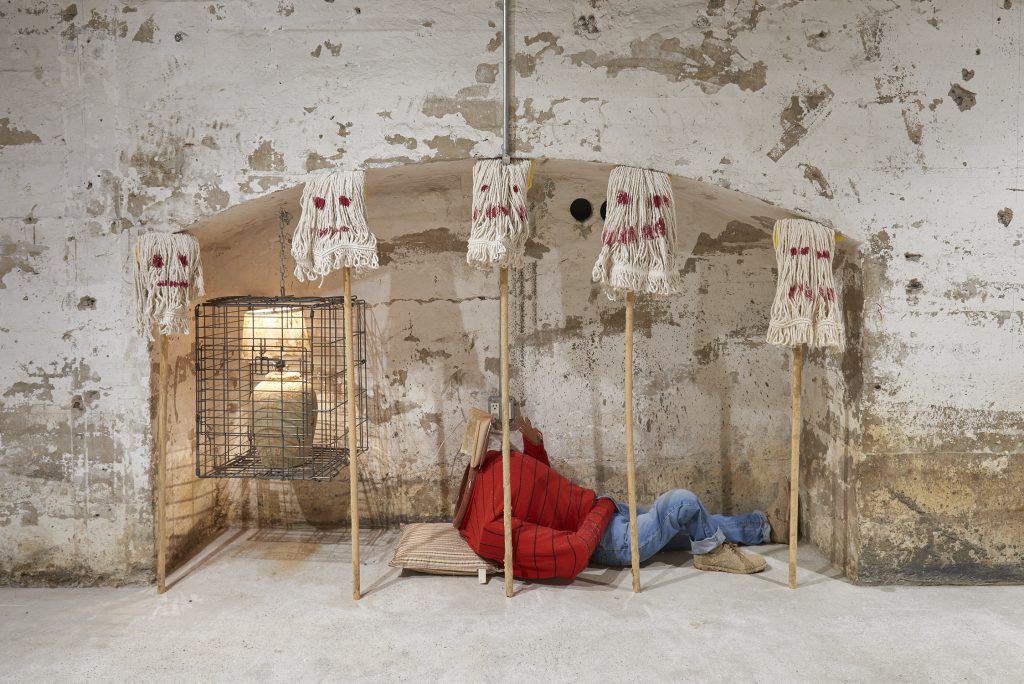Non-Profit Contemporary Art Space SculptureCenter’s Winter Programming
Two shows that explore disbelief and reference the institution’s past

SculptureCenter has had many locations and transformations in its time, but has always made an incomparable impact on the NYC arts community. Originally founded in 1928, as The Clay Club by sculptor Dorothea Denslow, its intention has always been focused on artists both established and emerging that refuse to play it safe. In 2001, the organization purchased a former trolley repair shop in New York’s Long Island City, and it was renovated into their current exhibition space.
Now overseen by director Christian Rattemeyer (former associate curator at MoMA’s drawings department), the institution is currently showing two winter exhibitions: Rafael Domenech: Model to exhaust this place and the group show, In Practice: Total Disbelief. Running concurrently, these exhibitions work in concert together and are comprised of newly commissioned works by the non-collecting museum. These shows push the boundaries of reality and standards while exploring memory and the possibilities for change. In both cases, the work presented is intrinsic to the space, provided a breeding ground for innovation.

Cuban-born Rafael Domenech (who featured in SculptureCenter’s past group show Searching the Sky For Rain) has built on his ongoing exploration of the space for his current installation. He created a movable artwork that divides the space with a series of blue mesh partition screens with oval cut-outs. These 12-feet-tall screened walls are accompanied by multi-functional interlocking plywood boards, both of which Domenech inscribes with phrases from two poems by the Cuban writer Severo Sarduy (1937-1993), who worked in exile in Paris.

SculptureCenter’s curator Sohrab Mohebbi explains, “One of the main ideas in this show is a commitment to a certain critical dislocation and I think it’s translated through the architectural project that has completely transformed the space into a tool to also make the work. Rafael’s manner to use the possibilities of this space and in particular, the gantry that has been here since 1905 since this building was built as a trolley repair shop. You can see the building is a component for the work itself.”
The artist explains his work in context to standardization and a study of metrics. Domench describes these metrics as “a system for conditioned living in architecture that is relatable to mathematical infrastructure.” He furthers this, saying “For me, it’s an understanding of the metrics and how they perform in daily life to translate it into the exhibition. What that does is create a relatability to the architecture, the human, and body.” Mohebbi adds, “Standardization on one hand is, let’s say, a form of oppression; especially when it’s imposed on a global scale. It displaces a lot of indigenous aesthetics and ways of being in the world. On the other hand, once it is implemented globally Rafael is really interested in how you can use this to almost infiltrate that process of standardization to create different results.”

Since 2003, In Practice has remained a highly anticipated annual show and is often viewed as a place to chart the work of emerging artists. In Practice has supported nearly 200 artists with the essential resources of space, funding, time, and administrative support. This year’s program was curated by Kyle Dancewicz, SculptureCenter’s director of exhibitions and programs. Dancewicz breaks down the selection process and tells us that every spring they start an open call to artists. “We get about 800 applications annually,” he says, “and go through a long process of narrowing down to ultimately 10 to 15 artists. It’s often artists’ first engagement with a commissioning institution, with a non-profit institution, or with showing in New York galleries.”

Introducing the first work in the show, Dancewicz highlights Devin Kenny and Andrea Solstad’s piece “Untitled (Purves Sr.)” in which a 33-year-old Chevy Montecarlo has been parked outside the space, and “has been treated to make it look like about 1,000 years old and covered in dust.” The piece will remain outside for as long as possible into the exhibition run, as Dancewicz says, “It will be there as long as we can afford to pay for tickets, basically.”

Another standout work is Emilie Louise Gossiaux’s “E.L.G Familial Archives (Outerspace).” After the artist lost her sight 10 years ago, she developed an adaptive practice for drawing and sculpting. These ceramic sculptures and drawings are made from the artist’s memory of tattoos on parts of her body and the bodies of her family members. Dancewicz says, “These are sort of surrealist sculptures but also work haptically and with memory to make an archive of body parts that connect her family. There is a lot of humor in them too.”

Andrew Cannon’s “In Gertrude Fireplace” addresses architectural and sculptural questions. The piece is a reproduction of a fireplace that Gertrude Vanderbilt Whitney commissioned in 1918, and currently sits inside the New York Studio School. The work is handmade with a combination of plasters, while the bricks are actually cast from those on SculptureCenter’s facade. The “flames” and other elements are painted with watercolor and sketched on.

Both Rafael Domenech: Model to exhaust this place and In Practice: Total Disbelief are on view now through 23 March. A round-table talk about In Practice will occur on 4 February at 7PM. More exhibition-related special events programming will unfold in the following months.
SculptureCenter is located at 44–19 Purves Street, Long Island City, NY 11101
Images courtesy of respective artists and SculptureCenter












